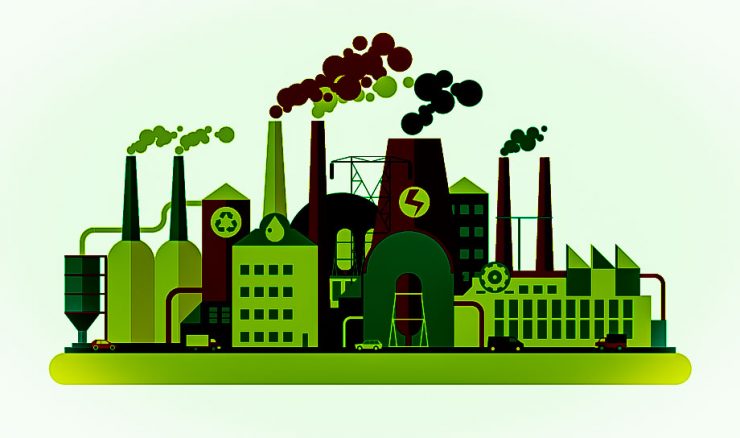Policy makers have been worrying about the consumption slowdown for some time. But the far greater danger could be the supply side choking up.
Even before the Coronavirus pandemic upturned the globe, finance ministry mandarins and economic analysts had started worrying about the consumption slowdown. When the last set of GDP numbers were announced, economists were quick to point out that private consumption that had been the sole redeeming factor of our economic growth for several quarters was beginning to sputter.
Even now, much of the debate around policy response to the economic slowdown caused by the lockdown and the pandemic centres around two areas – the Reserve Bank’s ammunition in increasing liquidity in the system and the government’s ability to get consumption going again by various policy measures.
I think the one point being overlooked in these debates is the enormous supply shock we are about to face. The supply shock could last between six months to a year and is a direct consequence of the slowdown and the various steps being taken by the government to ensure social distancing and reduce the transmission risk.
When a national lockdown was announced abruptly giving just four hours notice for a 21-day near-complete shutting down of all but a few economic activities, initially there was complete chaos.
Over the next few days, as recounted in The Lockdown Diaries 7: A Hard Stop (https://www.prosaicview.com/lockdown-diaries-7-a-hard-stop/), some of the more enlightened states permitted a few lucky manufacturers that were classified as makers of “essential products” to start partial operations. The essential products included only food, hygiene and pharma products and the ecosystem like packaging and labelling that would be required for those.
 Those permissions came with stringent conditions. This included safety, sanitation and social distancing protocols and as well as a strict cap on the number of workers who could come into work, and the number of shifts the factory could operate in a day.
Those permissions came with stringent conditions. This included safety, sanitation and social distancing protocols and as well as a strict cap on the number of workers who could come into work, and the number of shifts the factory could operate in a day.
For most companies that managed to get operations back after 48 to 72 hours post receiving the permission, the capacities that came back into operation ranged between 20 and 30%.
But every producer of “essential goods” could not get their factories rolling even if they could get permission. That is because over the years, Indian manufacturers have got integrated into the global supply chain and a fair amount of inputs today come from countries ranging from China, Vietnam, Taiwan, Malaysia and South Korea to the EU and the US and Australia.
Partly because of disruptions in those supply chains and partly because of the shortage of labour at ports and airports and other hurdles such as transportation, a number of factories found themselves unable to reopen even with their credentials as “essential product” makers.
The other factor was that a number of states refused to let factories get back into operations during the lockdown – irrespective of whether they made essential goods or non-essential products.
After 40 days of near-complete lockdown, the new extended lockdown has eased many restrictions. But even here, the factories are only being permitted to operate with 33% manpower.
Over the next few days, about 20% of the country’s total manufacturing capacity before the lockdown is expected to come back into operation.
During the lockdown, many consumers complained of some shortages of essential goods – ranging from unavailability of some specific brands to low supplies of several types of products like ready-to-eat foods. But much of these shortages were felt because of panic buying earlier and the delivery chain disruption caused by restrictions of trucks on inter-state movement and sometimes the lack of permission to pick up and supply goods.

This was, therefore, not a real shortage of goods but more a case of goods being available in warehouses or stuck on the roads but unable to reach retail points where the consumer expected them.
As the lockdown is eased after 40 days and factories get back online, a range of manufacturers from different industries – from garment manufacturers to alcohol companies, and from smart phone assemblers to plastic products sellers tell me that initially the consumer will not see a problem. The reason is that there was enough finished stock in the pipeline that will meet demand for the first couple of months.
But if demand continues picks up after that, there will be a real problem. First, not many companies have the financial wherewithal to survive after 40 days of inactivity and shortage of labour and the new conditions to mitigate the risk of transmission among workers.
Among the financially strong companies that will survive, the factories will still run at sub-par capacities. Many manufacturers who do not want to be quoted told me that they do not expect to cross 50% capacity utilisation at best till the end of the calendar year.
When policy recommendations are made, much focus is put on financial incentives to manufacturers reeling under problems. But many of the manufacturers I spoke to thought that the other problems often get ignored. These include labour laws, tax incentives that would allow them to be more competitive, and many other issues that fall under the ease of doing business.
Then there is the question of creating alternate raw material and input supply chains and reducing the dependence on China. For many manufacturers, that is a real problem because their cost of production depended heavily on China’s manufacturing prowess.
These are some of the issues that the government will need to remember when it works out the stimulus package. And these could be some of the most difficult problems to find solutions for.










Add comment